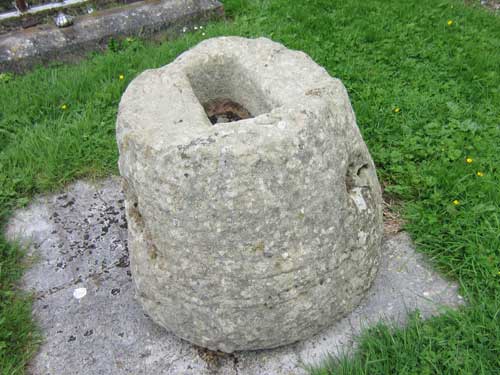Today we drove out to Kells (or Ceanannus Mor, meaning Great Fort), located in County Meath.
Columba (or Colmcille, 521 - 597) founded a number of monasteries during his lifetime. In 563, he left Ireland and formed one on Iona in the Hebrides (western Scotland), from which the missionaries brought Christianity to Northern Britain.
In 806, 68 monks were killed by a Norse raiding party and the survivors fled to Ireland, bringing their treasures with them. They built a monastery here and made it their Chief House. In spite of numerous raids by the Danes during in the 10th and 11th centuries, the Columban community flourished. But in 1176, Anglo Normans devastated the city. The monastery declined and was replaced as Chief House by one in Derry.

The monastery around the year 1000 (click for a larger view)
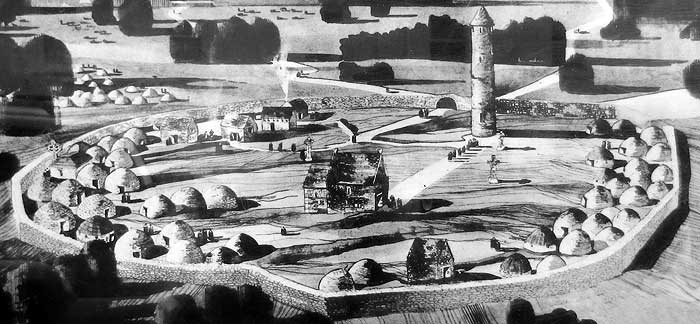
And around 1100
St. Columba's Church and grounds mark the original site of the Monastary of Kells.
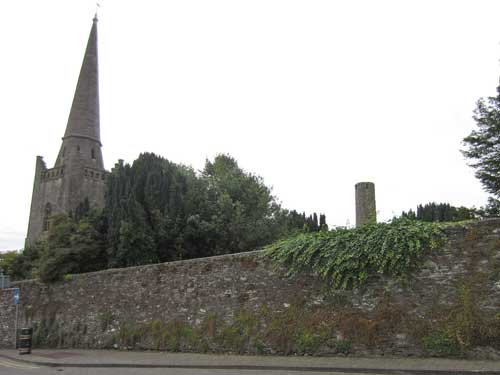
This wall around the churchyard marks the boundary of the original monastery.
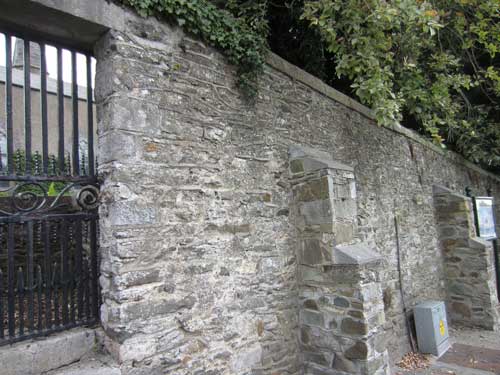
It was rebuilt in 1714 and reinforced in 1998.
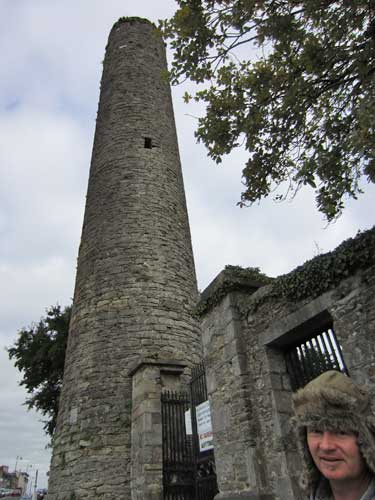
Approaching the round tower
Round towers were common on or near monastic sites. Such structures were referred to as a Cloigteach (bell tower) and were used as lookout towers and places of refuge during Viking attacks.
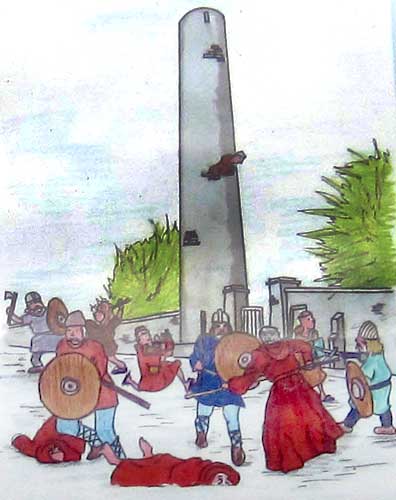
A Viking raid
The 10th century Kells tower is 90 feet tall (without its missing conical roof roof). It has 6 floors (with each floor having one window) but no internal staircase. Access was gained by ladders. A raised doorway made it more difficult to attack. This one had five windows on top instead of the usual four, to overlook the five gates guarding the roads leading into town.
The tower was mentioned in 1076 when Murchadh, who had been king of Tara, was murdered inside it.
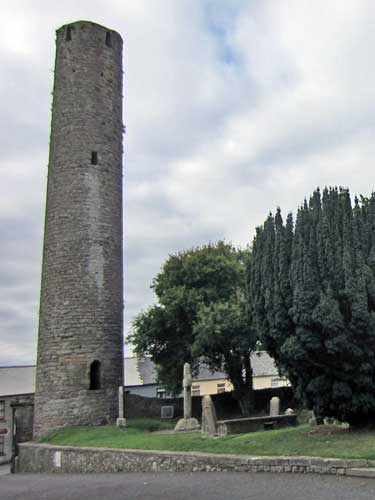
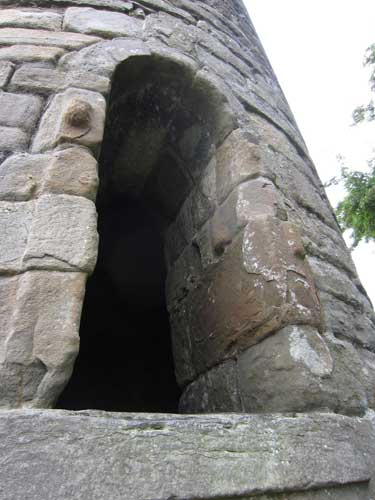
The tower ... with its elevated doorway
The church wasn't open yet so we wandered about the old cemetery.
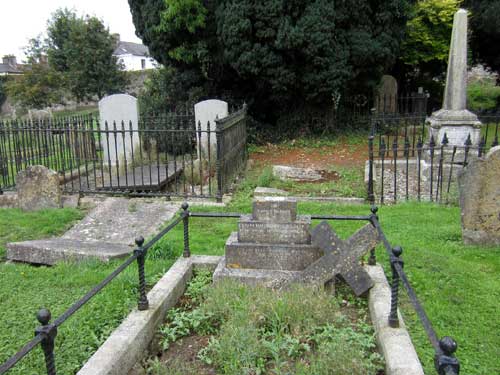
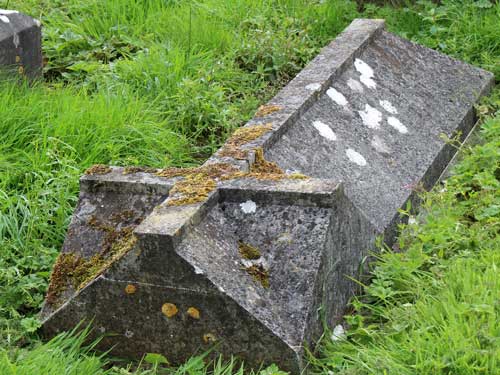
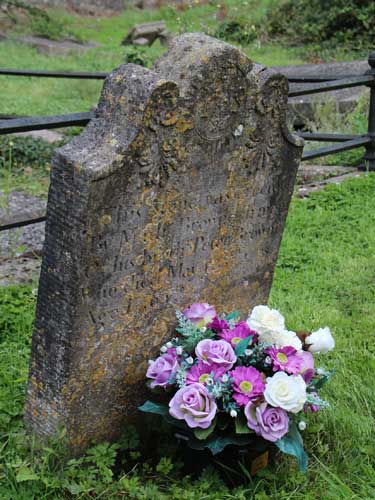
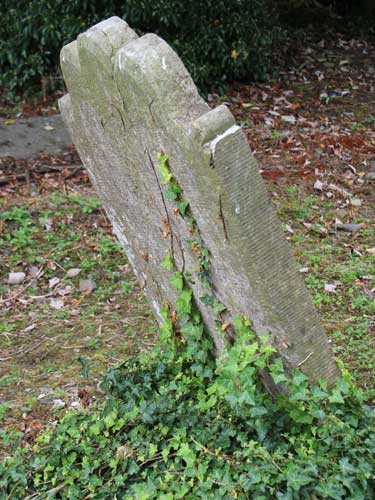
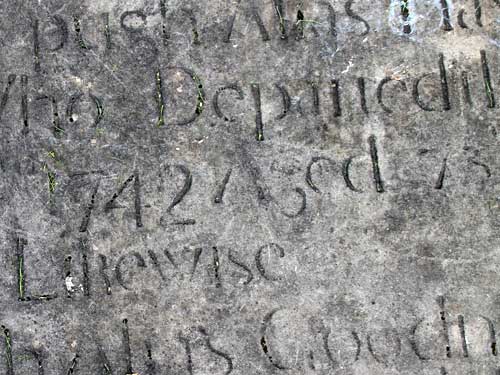
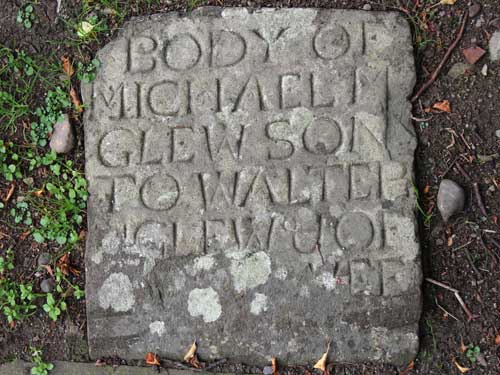

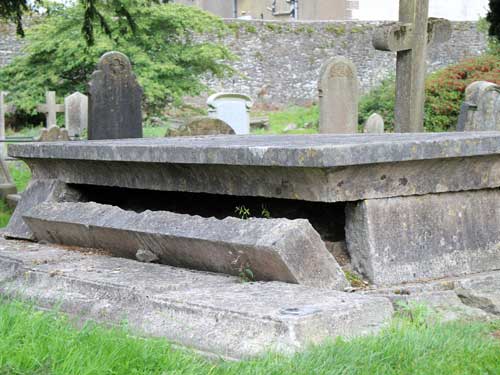
Uh... this one looks like the person escaped!
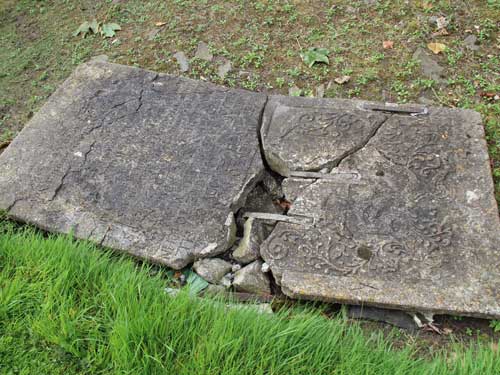
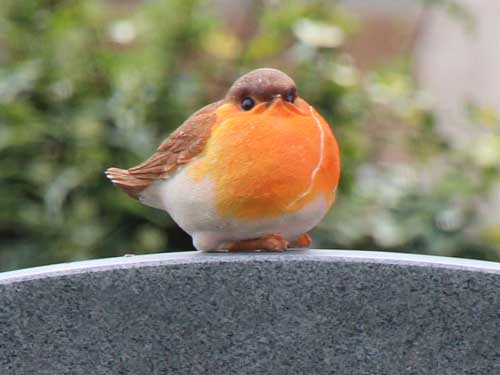
Doh! I was fooled by this fake bird on one of the headstones!

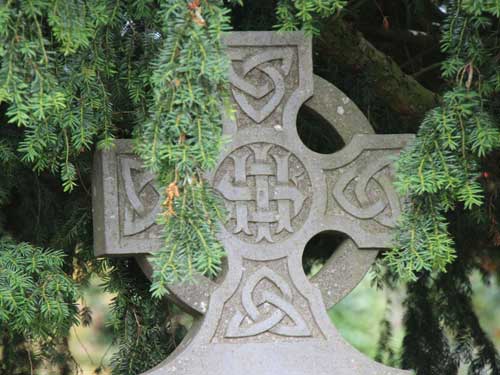
The Celtic cross is a form of Christian cross featuring a nimbus or ring that emerged in Ireland and Britain in the Early Middle Ages.
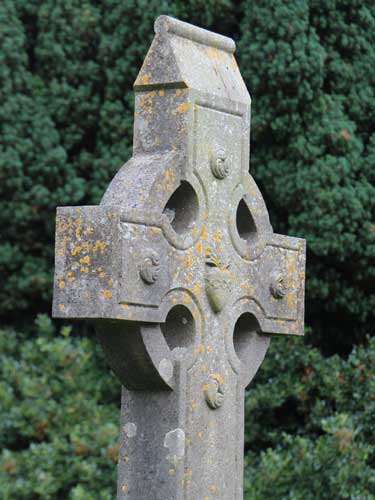
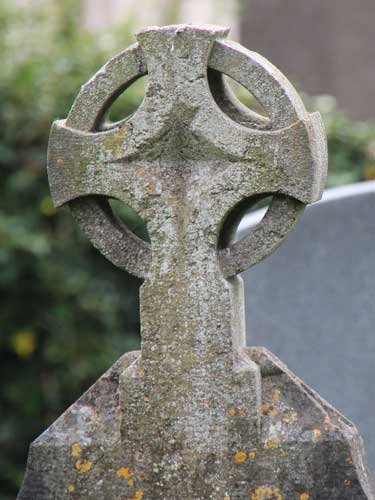
The highlight of the cemetery were the old High Crosses. There are between 60 - 70 High Crosses (or fragments thereof) remaining in Ireland. Some of them were basically 'sermons in stone.' There were at least five of them in Kells (four of them in this cemetery; the fifth one originally in the town's market square). The oldest was probably erected soon after the monastery was founded.
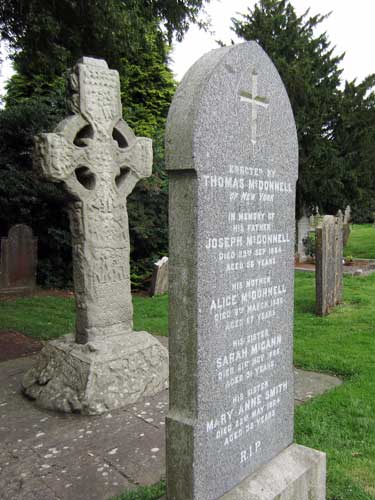
The South Cross, hidden among more modern markers
The South Cross (the Cross of St Patrick and St Columba) is the earliest of the group, probably from the 9th century. Standing at over 10 feet high, it is carved from a single block of sandstone.

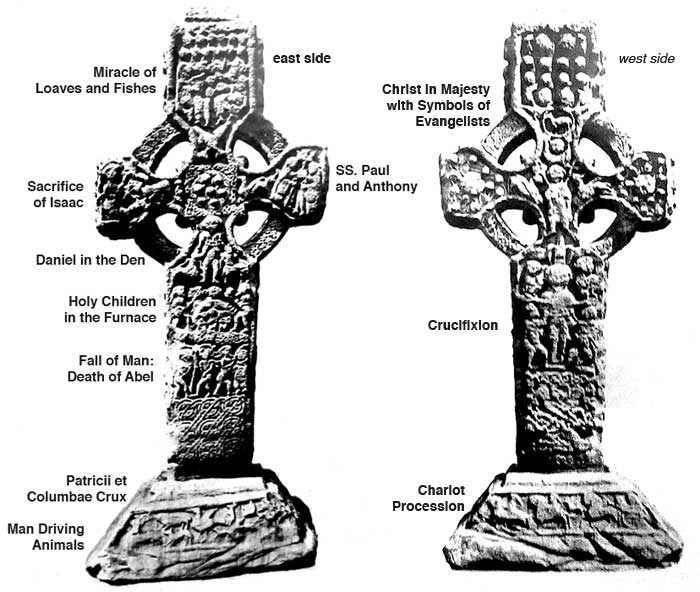
Biblical stories are interspersed with a variety of interlace patterns.

Daniel in the Lion's Den
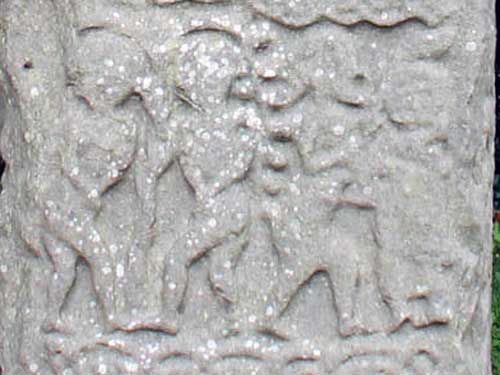
Death of Abel, with Adam and Eve standing to the left while Cain slays Abel on the right
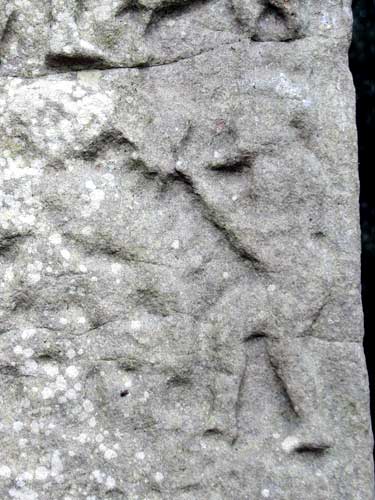
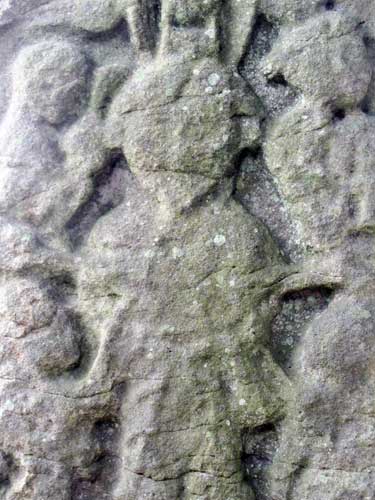
A piece of the Three Children in the Furnace ... The Crucifixion
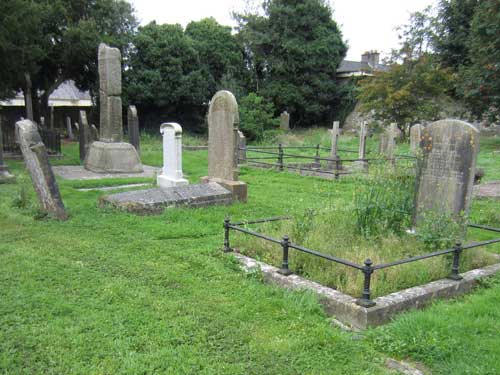
The West Cross blends in nicely.
Only the shaft of the West Cross (the Broken Cross) remains. This alone is over 11 feet tall, so the original cross must have been quite impressive. It was probably erected in the 10th century but was damaged when Oliver Cromwell's army arrived in 1654. The east side contains events in Christ's life while the west depicts early scenes from the bible.
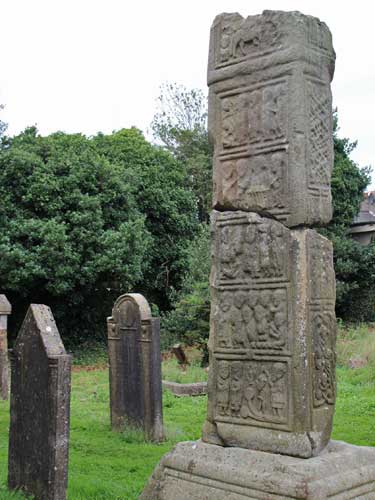
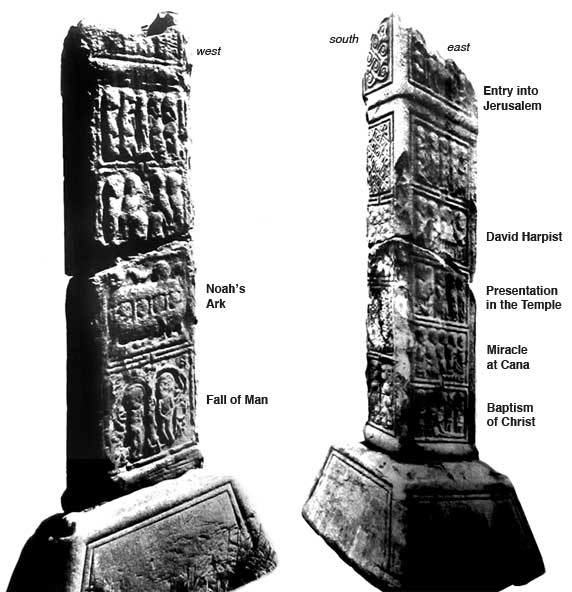
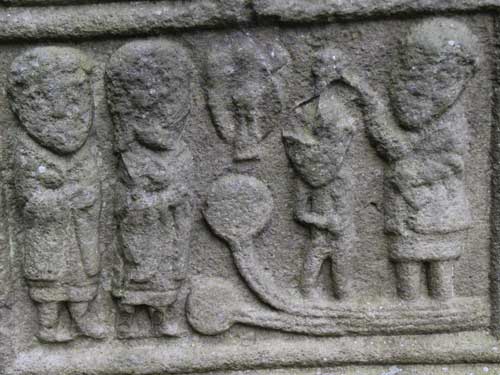
Baptism of Christ
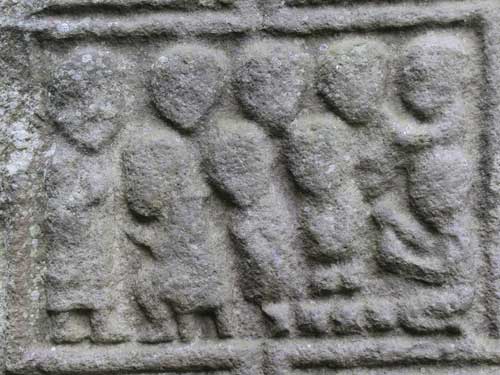
Marriage feast of Cana
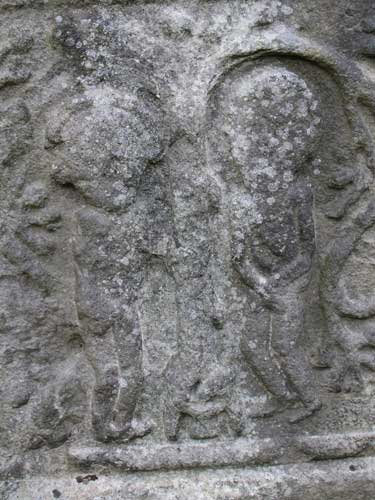
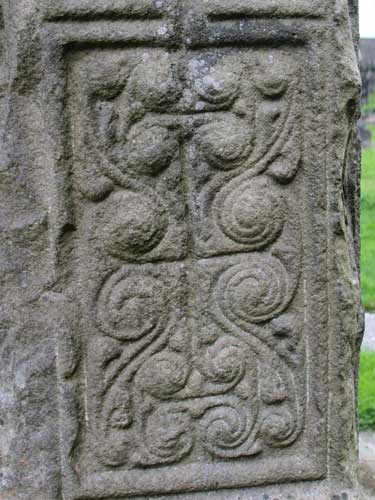
Fall of Man (Garden of Eden) ... intricate designs
The East Cross (or Unfinished Cross) towers over 15 feet high. Started in the 12th century, it has been blocked out for carving but little more work was done other than a crucifixion scene. Only the lower part of the ring survives.
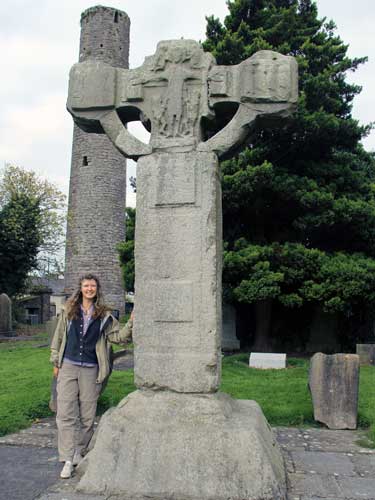
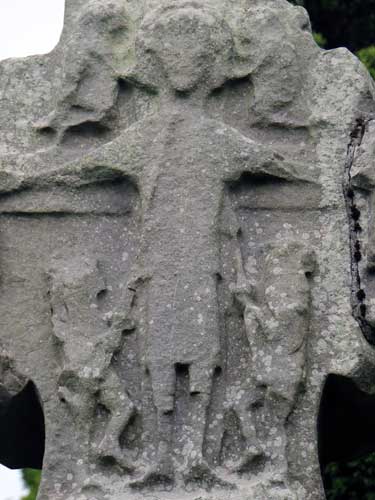
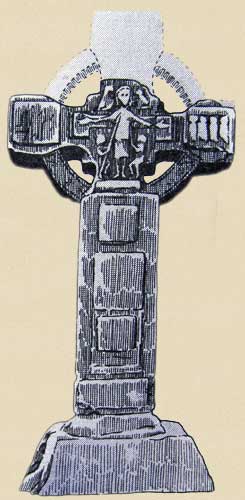


The back side
One last High Cross can be found within the cemetery and that is of the North Cross... although only the base remains.
